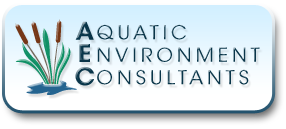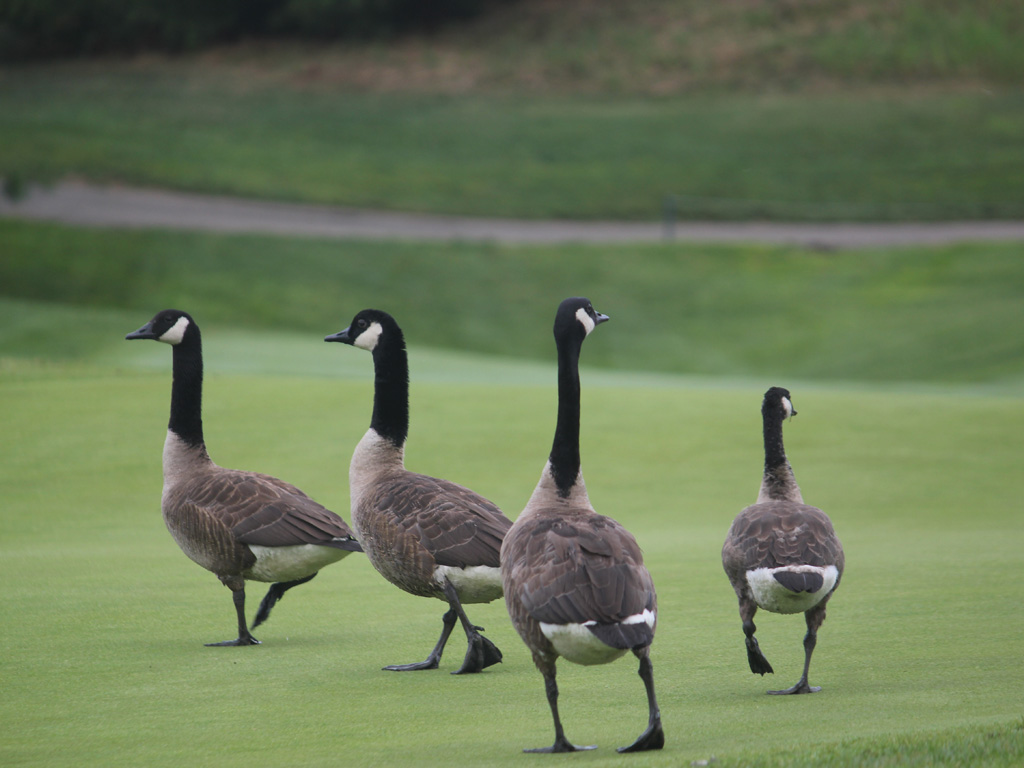What is Eutrophication?
Eutrophication is defined as an excessive amount of nutrients found within a pond or lake due to a large amount of runoff from an outside source. The process of eutrophication is dangerous and can cause negative consequences for waterbodies. As a result of an excess of nutrients in the water, plant and algae growth are encouraged and begin to grow denser. When the plant growth or aquatic vegetation becomes too dense, it then negatively impacts aquatic life and fisheries. Excessive nutrients can originate from a variety of different sources, both naturally occurring and intentionally induced.
How Do Livestock and Wildlife Play a Role in the Eutrophication Process?
Livestock plays a large role in the eutrophication process of waterbodies. Animal waste contains high amounts of nitrogen and phosphorus, which at high enough levels can harm aquatic life and fisheries.
Similar to livestock, wildlife, such as Canadian geese, can also contribute to high amounts of nitrogen and phosphorus within waterbodies. Canada’s goose populations have increased dramatically over the past couple of decades. With this large increase in population, small water bodies can become saturated with high amounts of phosphorus and nitrogen. Canadian geese usually deposit their waste around the water’s edge. The soil that surrounds the waterbody then absorbs the excess nitrogen and phosphorus from these droppings. Excessive nutrients trapped within the soil and released into a waterbody routinely causes yearly algal blooms.
Eutrophication Can Cause Excess Algae Growth
Landowners often complain about “green, slimy scum” covering their pond. This scum, a form of filamentous algae, forms algal mats. Algal mats form by single algal cells joining together. The mats trap gases, which allow for the mats to float. This overgrowth of algae can be amplified by excess phosphorus and nitrogen from runoffs.
Can Fertilizer Cause Eutrophication?
Artificial fertilizers, another source of nutrients used for plants, yards and farming, also often end up in ponds. These fertilizers severely impact private landowners’ bodies of water that obtain their inflow from streams. Artificial fertilizers used to increase crop growth and overall yield can often infiltrate streams during runoff events. Additionally, if a stream then flows directly into a pond, these fertilizers deposit nitrogen and phosphorus into them – once again leading to algal blooms and large algal mats in ponds.
How to Avoid Excessive Nutrients Entering a Pond:
If a landowner wants to construct a waterbody, the location of the waterbody is crucial to its protection from excess nutrients. Landowners should build a waterbody in an area away and protected from nutrient-rich runoff. When selecting the location for constructing a pond, choose a site located at a higher elevation and fed by natural, cold-water springs for the best results. If landowners cannot choose a site like this, they can also take steps to protect a pond from harmful runoff.
A few ways to prevent pond runoff include:
- Implementing a diversion ditch
- Planting a riparian buffer
- Constructing a sediment pond
The issue of eutrophication is not easily avoidable and will likely continue into future generations. Subsequently, the amount of natural and artificial fertilizers used will always increase due to the high demand for food crop production. It is up to us to limit the amount of excess nutrients that enter our water bodies and to protect them from eutrophication and other harm.
Contact AEC for Pond Health Management to Rebound From the Impacts of Geese and Runoff
Aquatic Environment Consultants can help you avoid the effects of eutrophication in your waterbodies. Reach out to the team today for a consultation and custom action plan for your pond or lake.




1 Comment
I didn’t know that.
Add Comment